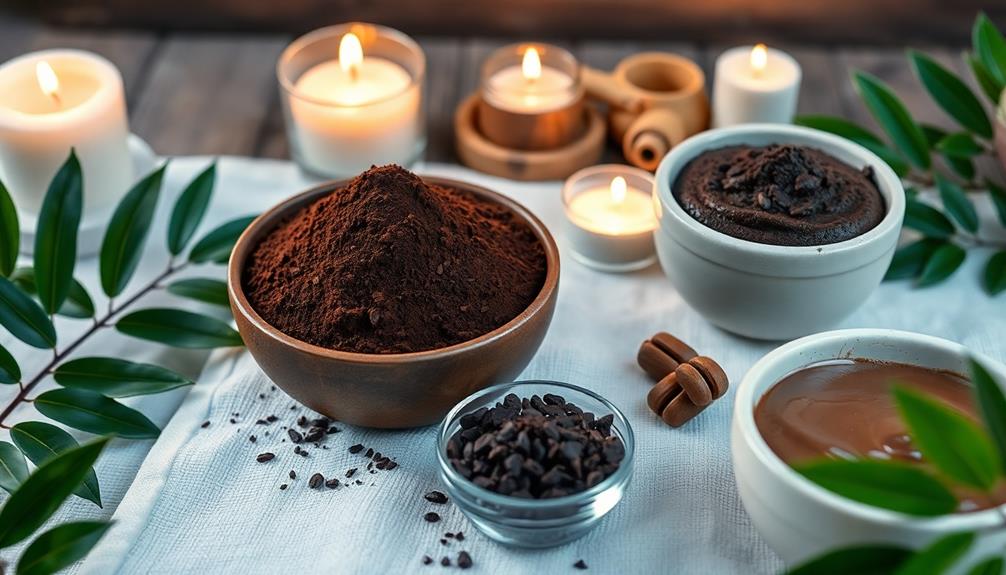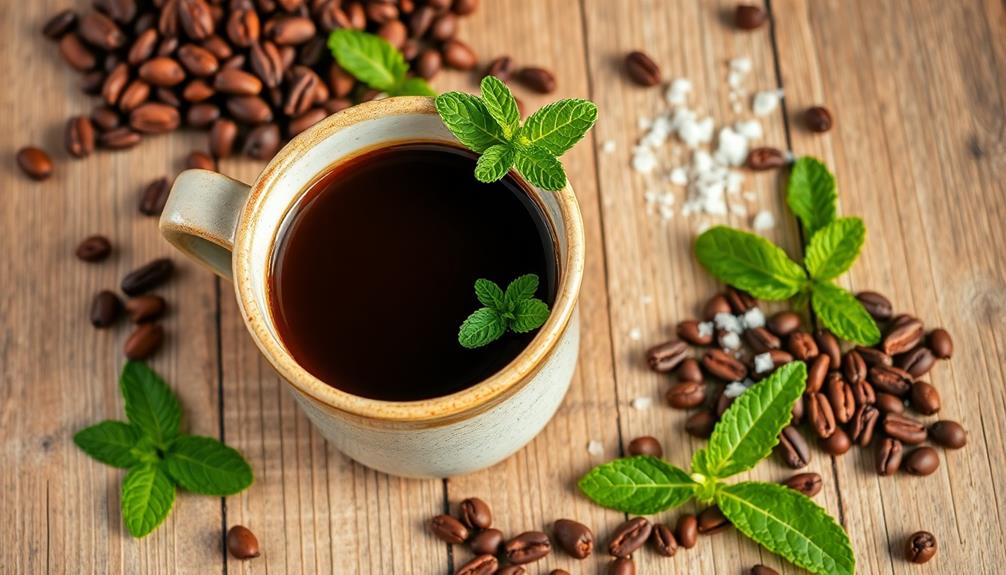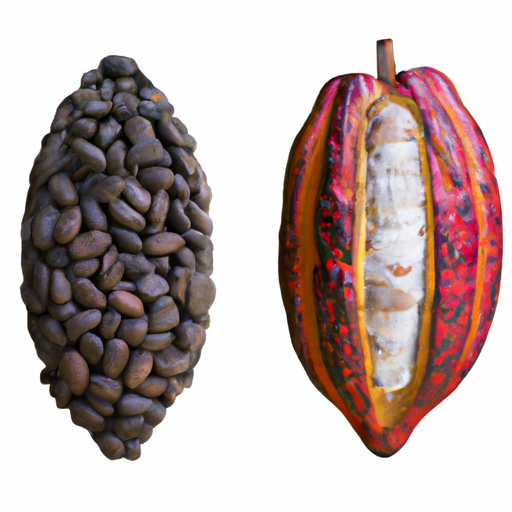Raw cacao's packed with antioxidants, making it a fantastic choice for face masks and body scrubs. It boosts blood circulation, helping your skin look more radiant while improving elasticity and reducing fine lines. You can easily create a DIY mask using cacao powder, jojoba oil, and Moroccan clay. Just mix and apply for a rejuvenating experience. When it comes to scrubs, cacao works wonders paired with coffee or coconut for exfoliation. Plus, it offers a delightful chocolate scent! Explore more ideas and recipes to truly harness the power of raw cacao in your beauty routine.
Key Takeaways
- Raw cacao is rich in antioxidants, promoting healthier skin and reducing signs of aging in beauty applications like face masks and scrubs.
- Cacao enhances exfoliation, removing dead skin cells and promoting a radiant complexion when combined with ingredients like coffee or clays.
- Its anti-inflammatory properties make cacao ideal for soothing sensitive or acne-prone skin in DIY beauty treatments.
- Incorporating cacao into masks and scrubs supports skin hydration and elasticity, thanks to its mineral content.
- DIY cacao skincare options are cost-effective and customizable, allowing users to tailor recipes to specific skin needs and preferences.
Benefits of Raw Cacao
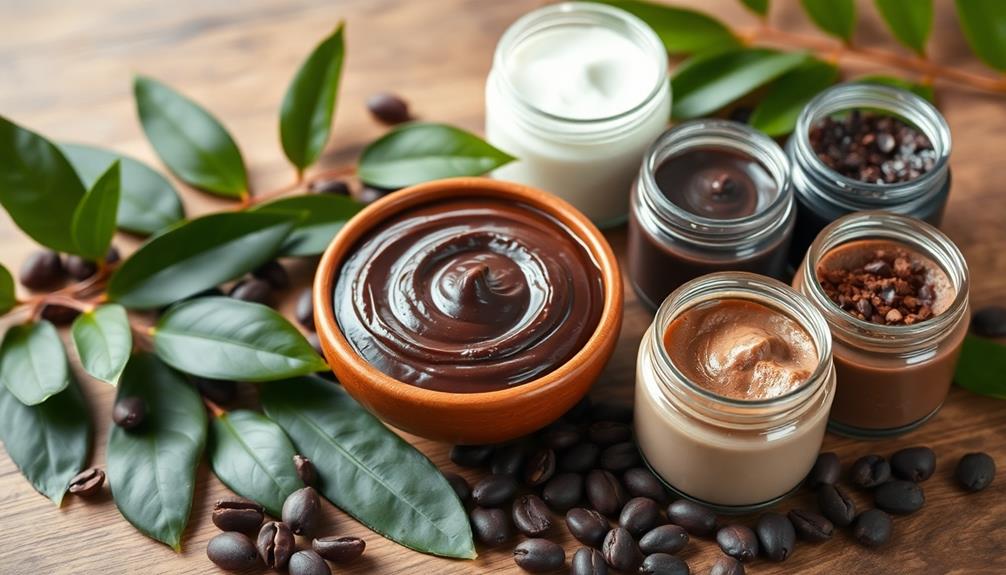
Raw cacao is a powerhouse for your skin, packed with antioxidants like flavonoids that boost blood circulation and shield against free radical damage.
These flavonoids not only help protect your skin but also enhance collagen and elastin production, promoting firmer skin and reducing the appearance of wrinkles. If you're looking to maintain a youthful glow, incorporating raw cacao into your skincare routine can make a significant difference.
Moreover, the anti-inflammatory properties of cacao can soothe redness and blemishes, making it an excellent choice for sensitive or acne-prone skin.
Its ability to calm irritation means you can enjoy healthier skin without the harsh chemicals often found in other products.
Raw cacao is also rich in essential minerals like magnesium and iron, which support skin health and hydration, contributing to a radiant complexion.
Regular use of products containing raw cacao can even uplift your mood thanks to its natural compounds.
Plus, it may increase your tolerance to sun exposure, offering an additional layer of protection.
DIY Face Mask Recipe
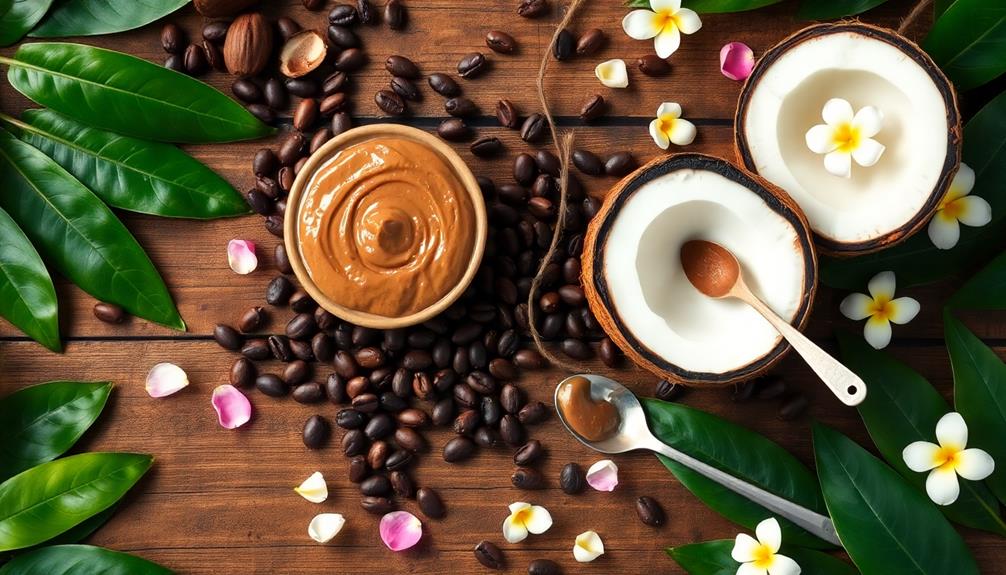
Creating a nourishing DIY face mask with raw cacao is a fantastic way to harness its beauty benefits at home. To whip up this rejuvenating mask, combine 1 tablespoon of raw cacao powder with 2 teaspoons of Moroccan red clay and 1/2 teaspoon of jojoba oil. If you're looking for an extra boost, consider adding 1/4 teaspoon of maca root powder for its additional benefits.
Herbal teas, known for their soothing properties, can complement this mask by promoting relaxation during your self-care routine aiding in relaxation.
Start by mixing the dry ingredients thoroughly. Gradually incorporate cooled green tea until you achieve a creamy, pudding-like consistency—this texture is perfect for applying.
Once your mask is ready, apply it in a thick layer on your clean skin. Allow it to sit for 10 to 15 minutes to maximize its nourishing effects.
After the time is up, rinse off the mask with a warm, damp cloth, followed by a cool water rinse to reveal refreshed, hydrated skin.
For freshness, store any dry ingredient mixtures in airtight containers. Remember to avoid pre-mixing liquids until you're ready to enjoy this delightful raw cacao treatment. Your skin will thank you!
Directions for Application
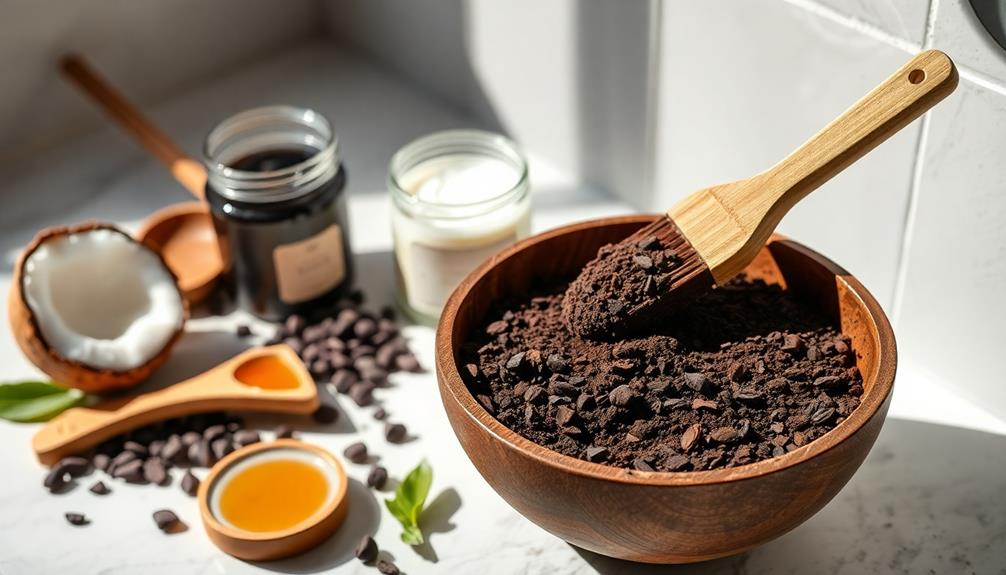
To get the most out of your raw cacao mask, start by applying about 1 tablespoon evenly on clean skin, steering clear of the eye area for safety.
Make sure your skin is free of makeup and impurities to maximize the benefits. If you're using a cacao face scrub, gently massage it into your skin in small circular motions. This helps to exfoliate while the cacao works its magic.
Once applied, allow the mask to dry for 20-30 minutes. For masks that include other ingredients, let it sit for 10-15 minutes instead. This time allows the nutrients to penetrate your skin effectively.
When the time's up, rinse off with warm water, using the same circular motions to enhance exfoliation.
After rinsing, follow up with your favorite serum and moisturizer to lock in hydration and boost your skin's glow.
If you have any leftover mixture, store it in the fridge. Just remember to bring it back to room temperature before reusing, ensuring it remains effective for your next application.
Enjoy your radiant, refreshed skin!
Key Ingredients Overview
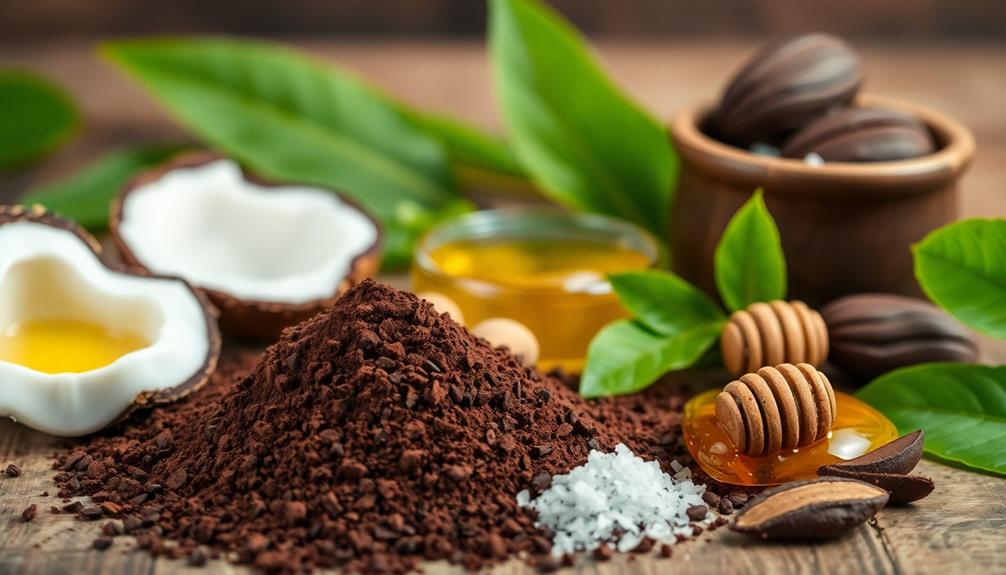
When it comes to raw cacao, its nutritional benefits are hard to overlook.
You'll find that its exfoliation properties help slough away dead skin cells, leaving your complexion fresh and radiant.
Plus, the antioxidants in cacao play an essential role in promoting skin health, protecting it from damage while enhancing your beauty routine.
Nutritional Benefits of Cacao
Raw cacao isn't just a delicious treat; it's packed with nutritional benefits that can transform your skincare routine. Rich in antioxidants, particularly flavonoids, cacao fights free radicals, enhancing blood circulation and reducing oxidative stress in your skin. This means healthier, more vibrant skin over time.
Additionally, glycolic acid's benefits for skin texture and hydration can complement the effects of cacao, providing an even more thorough skincare approach.
Additionally, cacao contains essential minerals like magnesium, iron, and calcium, which support skin hydration and overall health. Your complexion will look more radiant and nourished as a result.
The anti-inflammatory properties of cacao are especially beneficial for sensitive or blemish-prone skin, helping to soothe irritation and redness.
Cacao also stimulates collagen and elastin production, which enhances your skin's elasticity and firmness. This can effectively reduce the appearance of wrinkles and fine lines, giving you a more youthful look.
Plus, incorporating cacao into your skincare routine can increase your skin's tolerance to sun exposure, potentially lowering the risk of damage and related conditions.
With all these benefits, it's clear that raw cacao isn't just a treat for your taste buds; it's a powerhouse ingredient for your skin, making it a must-have in your beauty regimen.
Exfoliation Properties Explained
Incorporating raw cacao into your skincare routine can enhance your exfoliation process, unfastening even more benefits for your skin. Its rich antioxidant content, particularly flavonoids, helps combat free radicals, making your skin healthier and more radiant.
When combined with other key ingredients, the exfoliation properties of raw cacao truly shine. Here's a quick overview of the ingredients you might find in your scrubs and masks:
| Ingredient | Properties |
|---|---|
| Raw Cacao | Rich in antioxidants, combats free radicals |
| Coffee | Coarse texture for effective exfoliation; reduces inflammation |
| Coconut Shell Particles | Gentle exfoliation, removes dead skin cells |
These ingredients work together to improve skin texture, diminish the appearance of scars, and reveal brighter skin. Sweet almond oil is often included as an emollient, providing deep hydration and ensuring your skin stays moisturized after exfoliation. Regular use of these exfoliating masks and scrubs can considerably enhance your overall skin radiance, making it feel smooth and refreshed. So, don't hesitate to incorporate raw cacao and its exfoliation properties into your beauty routine!
Antioxidants and Skin Health
Antioxidants play a crucial role in maintaining skin health, as they combat free radicals that contribute to skin aging and damage. Raw cacao is packed with antioxidants, particularly flavonoids, which help protect your skin and promote cell repair and rejuvenation.
By adding cacao-based products to your skin care routine, you can enhance blood circulation, allowing nutrients to reach your skin cells more effectively, resulting in a brighter complexion.
Regular use of cacao can also boost your skin's hydration and elasticity. The high antioxidant content supports collagen and elastin production, which reduces the appearance of fine lines and wrinkles.
If you have sensitive or acne-prone skin, cacao's anti-inflammatory properties can soothe redness and blemishes, making it a fantastic option for your skin care regimen.
Additionally, the crucial minerals found in raw cacao, like magnesium and iron, contribute to your skin's vigor and hydration, promoting a healthy, radiant appearance.
Incorporating raw cacao into your beauty routine not only nourishes your skin but also helps you achieve a youthful glow. Embrace the power of antioxidants in raw cacao for vibrant, healthy skin.
Cost and Storage Tips
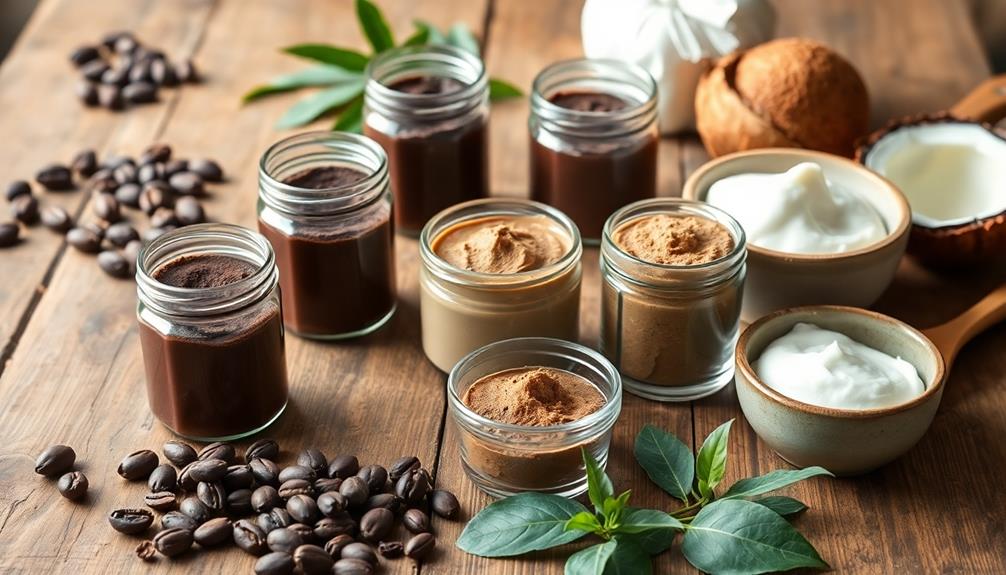
When it comes to using organic raw cacao in your beauty routine, keeping costs manageable is key. While organic raw cacao powder can be pricey due to its sourcing, creating DIY alternatives can help you save money without sacrificing quality.
Investing in quality ingredients is worth every penny, as they bring essential health benefits to your skin, such as rich antioxidants that can support skin health and improve overall appearance.
To make the most of your cacao beauty regimen, consider these cost and storage tips:
- DIY Masks: Use homemade recipes to reduce costs considerably.
- Storage Solutions: Keep dry ingredient mixtures in airtight containers to extend shelf life.
- Monitor Freshness: Check for odors or mold in your masks, which typically last about a week.
- Watch for Changes: Regularly inspect stored products for discoloration or texture changes to guarantee safety.
Enhancements for Your Mask
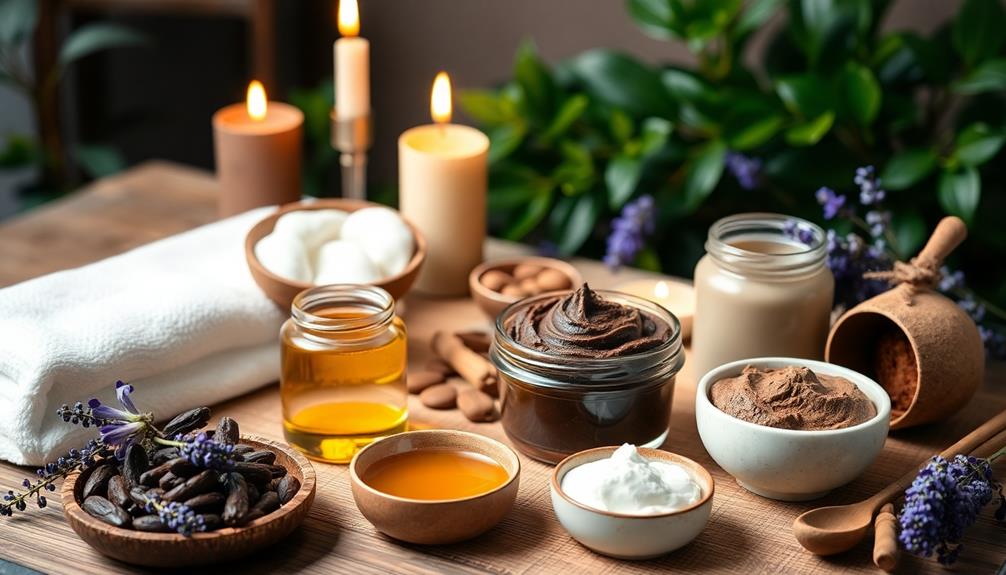
Your beauty mask can reach new heights with a few simple enhancements. If you're dealing with dry skin, consider incorporating natural ingredients like avocado or yogurt. These additions boost hydration and complement the nourishing properties of raw cacao, giving you a luxurious mask experience.
For an aromatic touch, try adding essential oils like lavender or tea tree oil. Not only do they enhance the scent, but they also offer calming effects or antibacterial properties.
If you're looking to reduce redness and promote a brighter complexion, mixing in turmeric or honey can amplify the anti-inflammatory effects of your mask.
Don't forget about the detoxifying benefits of clays! Using a combination of bentonite and kaolin can provide gentle exfoliation while drawing out impurities.
Additionally, playing around with different ratios of cacao to these ingredients allows you to customize the texture and effectiveness of your mask, ensuring it meets your individual skin needs.
Community Feedback

How has the community embraced the use of raw cacao in beauty routines? The feedback's been overwhelmingly positive, with many excited about the dual benefits of raw cacao for both skin health and culinary enjoyment.
People are diving into DIY recipes, sharing their results, and encouraging others to join in on the fun.
- Users rave about the chocolatey scent and texture of cacao-based masks, often feeling tempted to taste them during application.
- There's a surge in creative suggestions for pairing mask applications with homemade chocolate treats, making the experience even sweeter.
- Many appreciate the affordability of DIY alternatives, allowing everyone to incorporate raw cacao into their skincare routines without breaking the bank.
- Community members frequently share their positive experiences, fostering a supportive environment for exploring the benefits of raw cacao in beauty products.
With these interactions, you can see how raw cacao isn't just about skincare; it's a delightful experience that leaves your skin feeling nourished and refreshed.
Nutritional Advantages
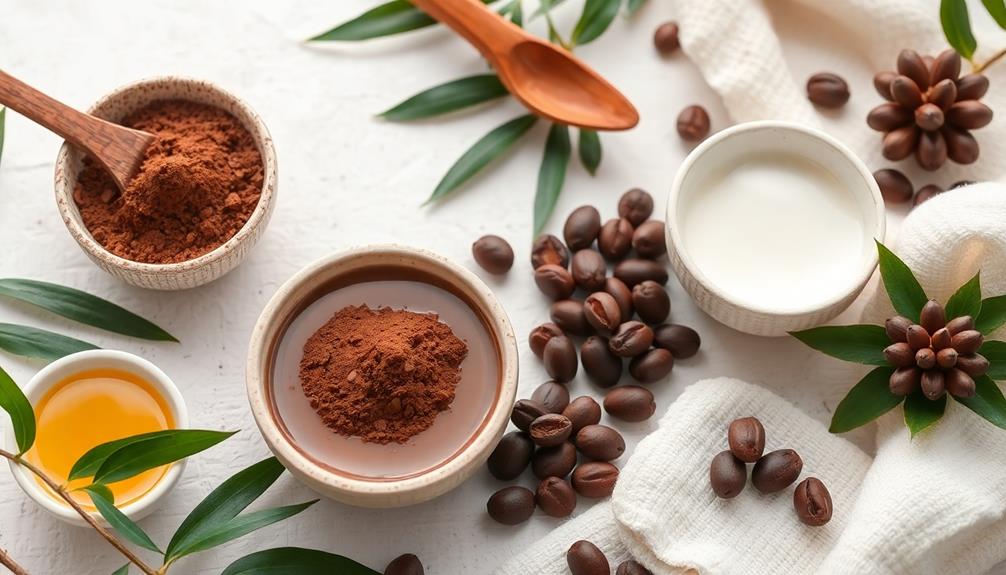
Raw cacao's antioxidant properties play an essential role in maintaining your skin's youthful appearance.
Packed with flavonoids, it helps combat free radicals that can cause damage and aging.
Plus, its ability to enhance skin hydration means you'll enjoy a plumper, more radiant complexion.
Antioxidant Properties of Cacao
Many people may not realize that cacao boasts impressive antioxidant properties, making it a powerhouse ingredient in beauty routines.
These antioxidants, particularly flavonoids, play an essential role in combating free radical damage, promoting overall skin health, and giving you that radiant glow.
Consider the benefits of incorporating cacao into your skincare:
- Enhances blood circulation, aiding in the restoration of skin cells.
- Supports collagen production, improving skin elasticity and reducing wrinkles.
- Increases the skin's tolerance to sun exposure, potentially lowering skin cancer risks.
- Provides essential minerals like magnesium and iron, fundamental for skin health.
Skin Hydration Benefits
Cacao isn't just about its powerful antioxidants; it also plays a significant role in skin hydration. When you incorporate raw cacao into your beauty routine, you tap into its rich supply of essential minerals like magnesium and iron, which are essential for maintaining skin health. These minerals help support cellular function and moisture retention, ensuring your skin stays hydrated.
The high levels of flavonoids in raw cacao fight free radicals, reducing oxidative stress and promoting a youthful glow. Its anti-inflammatory properties soothe redness and irritation, enhancing overall skin comfort and hydration.
Plus, the healthy fats found in raw cacao work to lock in moisture, preventing dryness and boosting skin elasticity for a supple texture.
Regularly using raw cacao can also improve blood circulation, efficiently delivering nutrients to your skin. This not only enhances hydration but also contributes to a radiant appearance.
Cacao Glow Usage
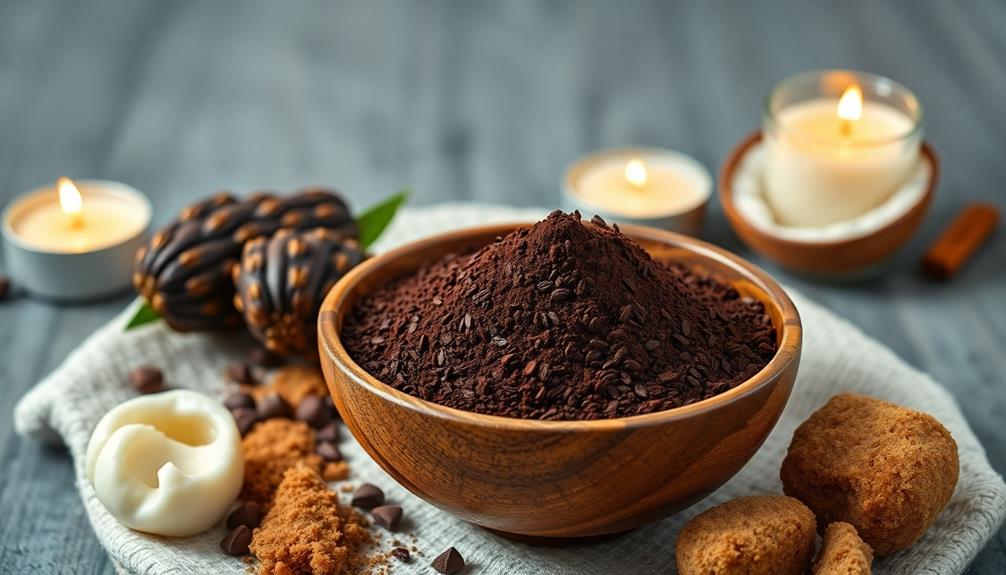
Reveal the beauty benefits of Cacao Glow by incorporating it into your skincare routine. This versatile product can transform your skin into a radiant masterpiece with just a few simple steps. Here's how you can use it effectively:
- Facial Mask: Mix one teaspoon of Cacao Glow with water to form a smooth paste. Apply it to your face and neck, avoiding the eye area. Leave it on for 10-15 minutes until it dries, then rinse with warm water for refreshed skin.
- Daily Scrub: Combine half a teaspoon of Cacao Glow with water, then gently massage it onto your face and neck in circular motions. This will exfoliate and cleanse your skin effectively.
- All Skin Types: Cacao Glow is suitable for all skin types, including sensitive skin, so you can use it with confidence.
- Long-term Benefits: Regular use promotes clearer, brighter skin over time, enhancing your overall skin texture and appearance.
Product Recommendations
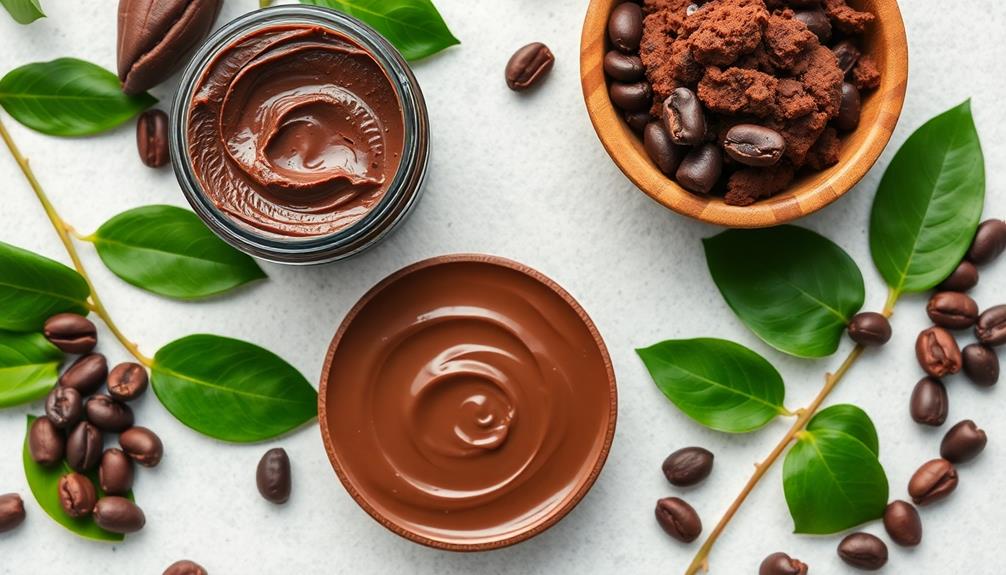
If you're looking to elevate your skincare routine, consider incorporating raw cacao-infused products that deliver impressive results. One standout option is the Cacao Coffee Scrub. Priced at $20 for 7.05 oz, this scrub combines organic cacao extract with roasted coffee grinds, nourishing and softening dry skin while leaving you with an aromatic chocolate scent.
Another fantastic choice is Evolve Organic Beauty's Natural Radiant Glow 2-in-1 Mask Scrub. This vegan and cruelty-free product features raw cacao to hydrate your skin, along with coconut shell particles for gentle exfoliation. It revitalizes your complexion, making it a must-have in your beauty arsenal.
For versatility, try the Cacao Glow, which you can use as both a face mask and a daily scrub. Regular application promotes clearer, brighter skin, enhancing your natural radiance.
Many users rave about the significant improvements in skin texture and hydration after using products containing raw cacao.
With its high antioxidant levels, raw cacao not only protects your skin from damage but also boosts that coveted glow. Embrace these products for a transformative experience!
Frequently Asked Questions
Is Raw Cacao Good for Your Skin?
Yes, raw cacao's packed with antioxidants and anti-inflammatory properties that soothe your skin. It boosts hydration and supports collagen production, giving you a youthful glow while reducing redness and blemishes for healthier, vibrant skin.
Is Cacao Good for a Face Mask?
Absolutely, cacao's rich antioxidants and anti-inflammatory properties work wonders in a face mask. You'll notice improved hydration, reduced redness, and a youthful glow, making your skin feel revitalized and radiant after each application.
Can I Put Cacao Powder on My Face?
Yes, you can put cacao powder on your face. It's packed with antioxidants and anti-inflammatory properties, helping to soothe your skin, enhance circulation, and promote a healthy glow. Just mix it with other natural ingredients!
What Does Cocoa and Coffee Face Mask Do?
A cocoa and coffee face mask exfoliates your skin, removes dead cells, and fights inflammation. It hydrates, brightens your complexion, and enhances texture, making your skin smoother and more radiant over time. It's suitable for all skin types.
Conclusion
Incorporating raw cacao into your beauty routine isn't just a trend; it's a game-changer! Imagine your skin transforming into a radiant, chocolatey canvas that even Willy Wonka would envy. With its countless benefits, from hydration to anti-aging, you'll feel like you've stumbled upon the fountain of youth! So, whip up those masks and scrubs, and watch your skin glow like never before. Why settle for ordinary when you can indulge in the extraordinary power of cacao?

